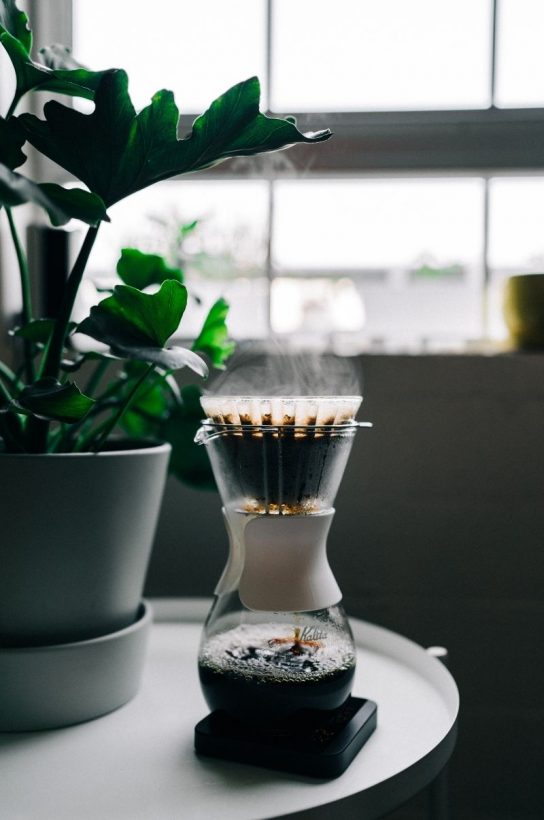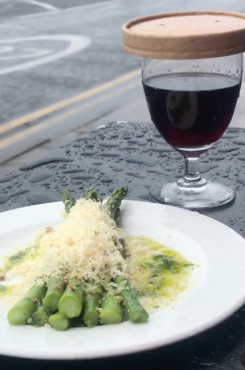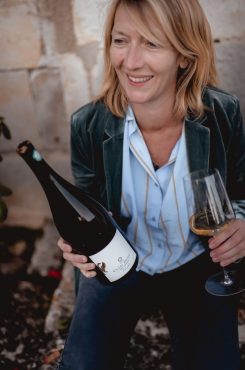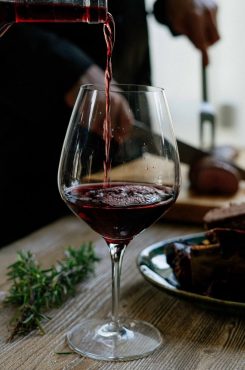Zeren Wilson on… going without
Published 4 February 2021

In the first of his new regular columns for CODE, the wine expert considers the pros and cons of Dry January and beyond
Two years ago I achieved a feat that I had thought impossible: four months without a solitary drop of fermented grape juice or other intoxicating liquor. I reckoned it had probably been more than 20 years since that long had passed without a drop, a staggering kind of statistic. A good amount of weight was shifted, meals lost the glimmering diversionary foil of a glass of wine, and the feat of mind over matter for someone immersed in the wine trade felt like a decent achievement of sorts. Bravo, well done me, backslaps all round, and a glass of Pol Roger ‘Pure’ on Christmas Day to break the drought. I wrote about the experience for Code Quarterly here.
This time, on a dark December day after Christmas 2020, a breezy self-denial of “oh I’ll have a couple of days off” quickly spiralled into “just push on for the month, you’ve done it before”, and we’ve cartwheeled into an unplanned Dry January, chain-drinking camomile tea and every one of its damned mates, from peppermint to ginger and lemon, rosehip, elderberry and echinacea through to licorice and cinnamon. I alternate these with the heavier hitters of Assam and Earl Grey, and chuck Ceylon into the mix too. Variety is the spice, or something like that.
Then there is coffee, there has to be coffee. While I don’t tend to dabble in the loose tea games, the ritual of bean grinding, with carefully poured V60 drip filter, soothes and distracts, with the reward of a bigger fisted howitzer of a caffeine whack: some small recompense for the absence of the buzz, the unmistakeable rush that alcohol delivers like a trusty pal.
Are the ‘no and low’ alcohol alternatives part of the plan? Nah, I will have no truck with them. I really have zero interest. Yes, some are passable, especially amongst the beers, but without exception the price of them puts me off, for what is essentially an echo, a tormenting reminder of the real thing, denuded of their essence and, well, their point. A killer comedy moment in Gavin and Stacey comes to mind, with James Corden’s character ‘Smithy’ railing against the family’s poor curry ordering: “In my book, a korma is pointless, it’s futile, I won’t touch it.” Futile. My thoughts exactly.
So, the tactic is about drinking something else and switching into a different mode entirely, which also tips into what I’m eating. The thing that surprises most about my stratagems for getting through the boozeless run, is the return of my lesser spotted ‘sweet tooth’.
As a self-certified ‘dessert dodger’ on the whole, more likely to wade straight into a cheese course or another glass of red in place of pudding, this puts me in edgy, rarely explored territory. I find I’m stacking up the excellent Waitrose No.1 range of chocolate, plundering all versions from Ecuadorian 90% cacao and Peruvian 80%, to the more decadent ones of orange and almond, or 49% milk chocolate with the crunch of feuilletine wafer and sea salt: there they are, all piled up in the cupboard, a stash that comforts just for being there, ready when needed. In Case Of Emergency Break Glass.
The urge for the bitter twang of dark chocolate seems to come raging more than any other, as if a switch has been flicked in my system, some kind of instinctive trigger: what’s going on here? Seems it’s not just me, it is indeed a thing. The science points to the link between alcohol and sugar, with both known to boost levels of dopamine, the brain’s ‘reward chemical’, as well as the fact that they share certain neuro-biological pathways, and at the extremes, both potentially addictive. Good ice-cream also becomes a balm, speckled with the stardust of vanilla pod, and… oh look I’m reaching for the chocolate one, and hang on where’s the strawberry, to recreate the childhood 1980s Neapolitan combo of dreams? In the weekly restaurant meal kits I’m grabbing from The Folkestone Wine Company, I’m lusting after the desserts of sticky toffee pudding, and apple crumble with vanilla custard like never before. I don’t even know myself anymore.
If I was a real boss I’d be getting my kicks from homemade kombucha, but I’m not in that team, and instead I’m hankering after the versions I’ve had at Coombeshead Farm at the breakfast table, its gentle sparkle both reviving and cleansing. I’ve dabbled with a couple of supermarket examples, but these don’t quite seem to hit the synapses in the same enlivening way. Not cheap either, if you’re knocking back as much as you’d like to. Instead, my cobbled together alternative becomes Aspall’s ‘raw organic’ unfiltered apple cider vinegar, mixed with sparkling water – the eye widening tingle it offers does the job.
On a serious note, the more formal concept of ‘Dry January’ began in 2013, when Alcohol Change (formerly Alcohol Concern) launched a national campaign to raise money for its alcohol dependence and addiction awareness efforts, with 4,000 people joining in – 2020 saw 100,000 signing up, and 4 million taking part. This year has totalled 6.5 million. The benefits of kicking through even just one abstemious month are well documented, including weight loss, lower blood pressure, and improvement in diabetes risk. In an industry like ours, with alcohol such a key component of the fabric of hospitality, of lifestyle and revenue, it’s wise for us to remain aware of its impact.
After a year unlike any other, with COVID-19 decimating the thrill of eating out, we should justifiably seek out joy and solace in food and wine at home, and that pleasure can be sharpened, honed further by a gentle pause. A recalibration. A reset. A whetting of the appetite before we wet our whistles.
‘Let’s whett; bring some
Wine. Come on; I love a Whett.’ –
Thomas Shadwell, The Squire of Alsatia, 1688





